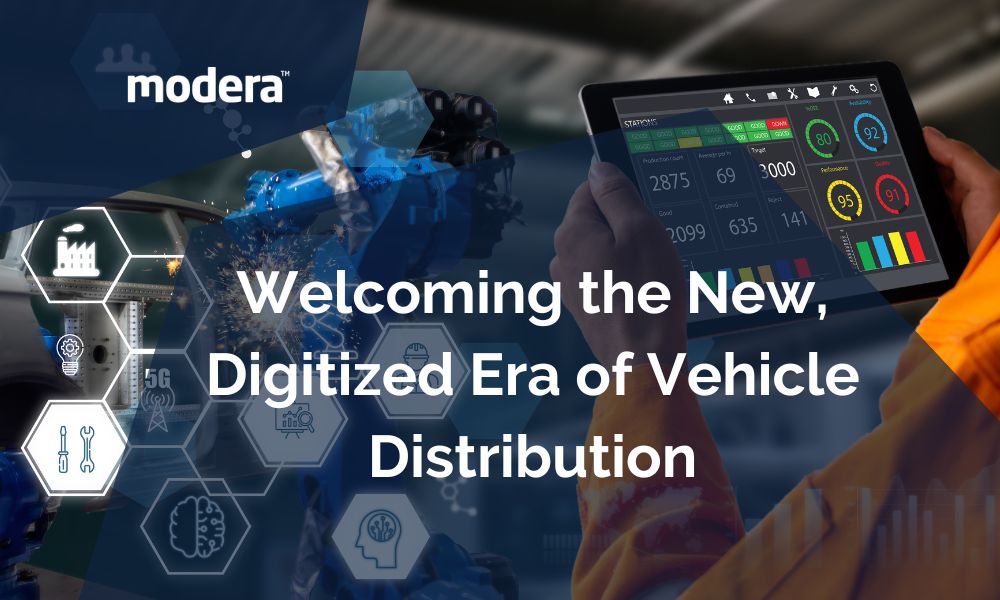
The aftermath of the pandemic combined with the longstanding vehicle distribution inefficiencies was the perfect storm for the lowest slump in new vehicle sales in years. But these inefficiencies have always existed beneath the surface, the crisis simply thrust them into plain view.
Historically, the process of distributing vehicles from manufacturers to dealers and eventually customers has involved massive amounts of manual paperwork, which has been quite inefficient. However, the industry has now entered a new digital era of vehicle distribution. Attitudes are shifting within the sector. The technology promises more efficient distribution through improved organization, communication, and real-time tracking. This revolution makes managing vehicle supply chains easier than ever while increasing transparency for dealers and consumers.
Vehicle Distribution Has Been Lagging in Tech Adoption
The automotive industry has been facing a significant supply chain disruption for some time now. The combination of production delays and capacity constraints has led to a shortage of vehicles. What is more, the finished vehicle logistics sector has been under heavy criticism for quite some time now for lagging in adopting technologies that provide data accuracy and better process visibility. Functions like ordering inventory, tracking railcar shipments, and managing compliance documents still involve endless spreadsheets, printed forms, physical document mailing, and frequent phone calls.
With that kind of an approach, communication has to flow between factories, logistics providers, dealers, and beyond largely on paper. Unfortunately, this creates opportunities for details and vehicles to fall through the cracks.
At the same time, supply chain visibility is low for dealers trying to manage growing businesses. For example, dealer inventory in the US is currently around over a million units, which is equivalent to a 25-day supply. This translates to a 70% decline from pre-pandemic levels.
What this has done is push some original equipment manufacturers (OEMs), such as BMW and Ford to adopt a build-to-order model. All of the above, has increased the pressure on the sector to seek technological solutions for tasks such as vehicle inspection and yard management.

Digitization of OEMs
Now, digitization, as part of the disruption in the automotive industry, has streamlined these critical distribution activities for enhanced organization and efficiency. It promises the potential to remove human error.
Cloud-based transportation management systems (TMS) give complete real-time views of shipments via user-friendly dashboards. Order status, vehicle locations, and ETA updates are available instantly rather than playing “phone tag.” Digital document storage and automated workflows smooth processes like title work and registration compliance.
For dealers and customers, digitization translates to more reliable and transparent experiences. Meanwhile, precise inventory tracking means fewer vehicles get lost and delivery delays are minimized.
Benefits To the Entire Automotive Industry
As digital vehicle logistics innovation is in full force with importer and OEM specific automotive software being developed, the entire automotive ecosystem benefits. New solutions exemplify how technology can facilitate collaboration between factories, transporters, dealerships, and motorists for optimized outcomes.
While adapting to new systems involves a learning curve, digitization ultimately drives positive transformations in productivity, automation, and consumer satisfaction. What is even more important to the adoption of these new technologies is that they fit like a glove into your existing manufacturing and distribution environment. Systems like Modera’s tie into the existing structures, which reduces the learning curve and implementation time.
Where’s Waldo? Searches are ending as digitization launches vehicle logistics into the modern age. Ultimately these systems allow more focus on moving metal rather than chasing documents. The industry appears geared for growth thanks to shedding antiquated processes at last. The future has arrived, and it’s driven by data.

